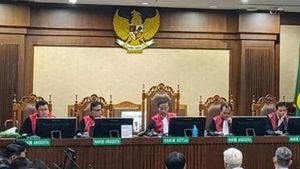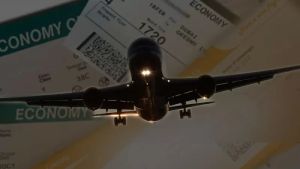JAKARTA - DKI Regional Secretary, Marullah Matali, assesses that the infiltration wells that have been the mainstay of Governor Anies Baswedan are not significant in reducing the impact of Jakarta floods.
However, the construction of vertical drainage can still help reduce the impact of flooding if the number continues to be increased.
"The infiltration well was originally biopore, then vertical drainage. We understand that this is not very significant. But, at least it has an effect", said Marullah to reporters, Wednesday, September 28.
Marullah also said infiltration wells will function optimally if it is accompanied by other flood control programs. One of them is dredging dams in Jakarta.
"For example, making infiltration wells and some policies for controlling these developments, I think will be very important. Indeed, comprehensively, some of what we do does not directly reduce flooding. But we really need to do it continuously", explained Marullah.
Furthermore, Marullah said that so far the DKI Provincial Government has carried out various flood control efforts. This is accompanied by discussion and soliciting expert opinion.
"We are currently discussing this with various parties, there are a lot of inputs. Some say this, later the study will turn out to be effective. It seems that for the Provincial Government there is no other way, except to follow the recommendations of the experts", he explained.
For information, the DKI Provincial Government plans to continue the construction of infiltration wells after the term of office of DKI Jakarta Governor Anies Baswedan ends.
This is stated in the Governor's Regulation Number 25 of 2022 concerning the Regional Development Plan (RPD) of DKI Jakarta for 2023-2026.
In the RPD compiled by Anies and his staff, it is stated that the handling of Jakarta floods is no longer just making or straightening the flow of rivers with concrete or sheet piling construction.
"Water flowing from the south of Jakarta to the north estuary of Jakarta can be held for longer, through the construction of reservoirs and increasing infiltration wells in the southern area of Jakarta", Anies wrote.
VOIR éGALEMENT:
Anies explained that the distribution of very low performance in DKI Jakarta lies in the middle and along the river. This is influenced by differences in landscape typology in the form of gently sloping fluvial plains, very gently sloping fluvial plains, and flood plains which are plains that are prone to overflowing river water.
Meanwhile, in the southern area of Jakarta, Fluvio-volcanic plains spread out in the southern part which naturally has better absorption potential than other plain typologies. Thus, the construction of infiltration wells can be intensified in this area.
"The use of Fluvio-volcanic plains can be optimized as infiltration to reduce the rate of water flow from upstream to downstream", explained Anies.
The English, Chinese, Japanese, Arabic, and French versions are automatically generated by the AI. So there may still be inaccuracies in translating, please always see Indonesian as our main language. (system supported by DigitalSiber.id)

















